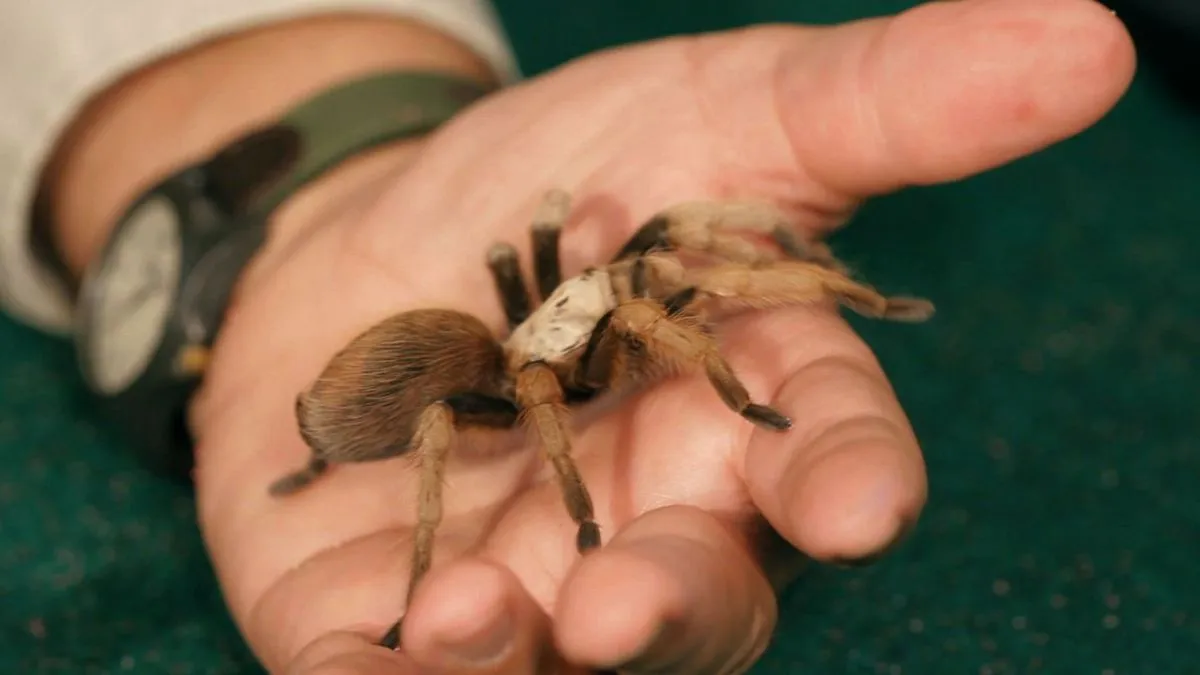Why Tarantulas Make Awesome Beginner Pets
Thinking about getting a pet but not sure where to start? Tarantulas can be an excellent choice for first-time exotic pet owners. These eight-legged creatures are often overlooked, but they offer a unique and rewarding experience. They are generally low-maintenance, fascinating to observe, and provide an intriguing glimpse into the world of invertebrates. This guide will explore why tarantulas are such great beginner pets and highlight five species perfect for those new to the hobby. Owning a tarantula can be a fantastic way to learn about nature, responsibility, and the amazing diversity of life on Earth, making it a truly unique pet ownership experience. Prepare to be captivated by these amazing creatures!
Low Maintenance & Fascinating Creatures
One of the biggest advantages of owning a tarantula is their relatively low-maintenance nature. Unlike many other pets, they don’t require daily walks, constant attention, or extensive grooming. Feeding them once or twice a week is usually sufficient, and their enclosures need cleaning only periodically. This makes them ideal for busy individuals or those who are new to pet ownership and aren’t ready for the demanding requirements of dogs or cats. Beyond their practicality, tarantulas are incredibly fascinating creatures. Their unique appearance, diverse behaviors, and life cycles provide endless opportunities for observation and learning. From watching them hunt to seeing them molt, owning a tarantula is a captivating experience that will keep you intrigued.
Minimal Space Requirements
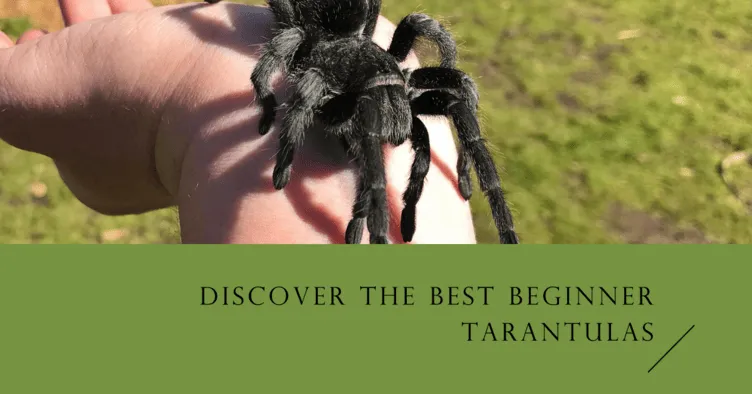
Another significant benefit of tarantulas is their minimal space requirements. A single tarantula can thrive in a relatively small enclosure, making them perfect for apartment living or homes with limited space. The size of the enclosure will depend on the size of the tarantula, but generally, they don’t need a lot of room to be happy and healthy. This is a major advantage compared to larger pets that require significant living space, such as dogs or even some smaller mammals. Moreover, the compact nature of tarantula habitats makes them easy to manage and maintain, contributing to their overall appeal as a convenient and manageable pet option. This is especially appealing for those with a busy lifestyle.
Educational and Intriguing Pets
Tarantulas offer an unparalleled opportunity for education and discovery. Observing these creatures can provide valuable insights into the fascinating world of invertebrates and arthropods. From learning about their different species and behaviors to understanding their lifecycles, owning a tarantula can be a highly educational experience. The process of setting up their habitat, providing the right environment, and feeding them can also be a rewarding learning experience. For children and adults alike, tarantulas can spark curiosity about nature, ecosystems, and the importance of responsible pet ownership. Furthermore, the unique characteristics of each species allow for endless fascination and an enriched understanding of the natural world, making tarantulas an excellent choice for anyone interested in learning and exploration.
The Top 5 Beginner Tarantula Species
Choosing the right tarantula species is crucial for a positive beginner experience. Some species are naturally more docile, easier to care for, and less prone to stress. Here are five of the best tarantula species perfect for those starting their journey into the world of exotic pets.
1. Pinktoe Tarantula
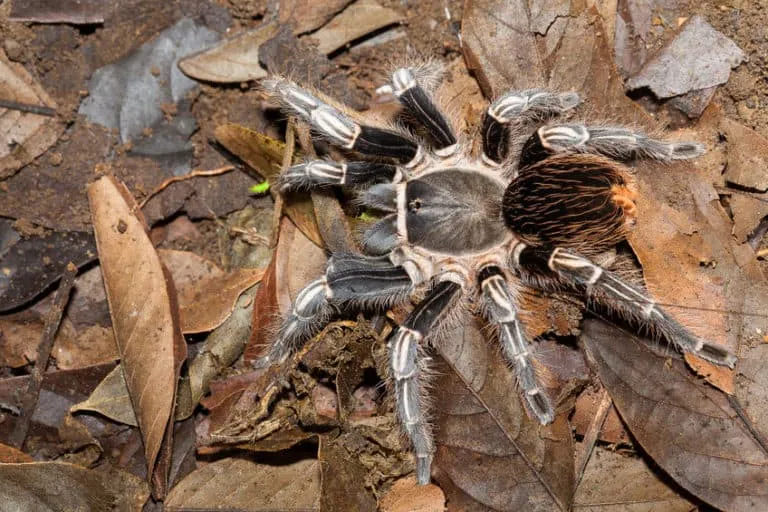
Appearance and Characteristics
Pinktoe tarantulas, such as the Antilles Pinktoe (Avicularia versicolor), are known for their stunning appearance. They are arboreal, meaning they live in trees, and have a vibrant combination of colors, including metallic blue, green, and pink. Their namesake pink toes add to their charm. They are relatively small, reaching a maximum size of about 5-6 inches, making them manageable for beginners. Their striking appearance makes them a favorite among tarantula enthusiasts, and their relatively docile nature adds to their appeal.
Temperament and Handling
Pinktoe tarantulas are generally docile and less defensive than many other species, making them suitable for beginners. However, like all tarantulas, they should be handled with care and respect. They are known to be skittish and fast, so handling should be minimized to avoid stressing the spider or causing it to fall. They can sometimes be defensive, but they are less likely to bite compared to other species. When handling, it’s essential to do so over a soft surface and to be gentle, ensuring the safety of both the handler and the tarantula. This species can be a rewarding pet when handled with patience and care.
2. Curly Hair Tarantula

Appearance and Characteristics
The Curly Hair tarantula (Tliltocatl albopilosus), as the name suggests, is known for its distinctive curly hairs that give it a unique and attractive appearance. Native to Central America, they are generally brown in color with golden hairs that curl throughout their body. They are a terrestrial species, meaning they live on the ground, and they tend to be relatively slow-moving, making them easy to observe. They grow to a moderate size, typically around 5-6 inches, and are well-suited for captivity due to their adaptable nature and beautiful appearance.
Temperament and Handling
Curly Hair tarantulas are known for their generally docile temperament, making them a popular choice for beginners. They are typically calm and less prone to aggression. However, like all tarantulas, they can be unpredictable, so handling should be approached with caution. They are not particularly fast, so handling is generally less risky, but it’s always essential to supervise and avoid sudden movements that might startle the spider. They may flick urticating hairs as a defense mechanism, which can cause skin irritation. With careful handling and respect, the Curly Hair tarantula can be a fantastic pet for those new to tarantula ownership.
3. Chilean Rose Hair Tarantula
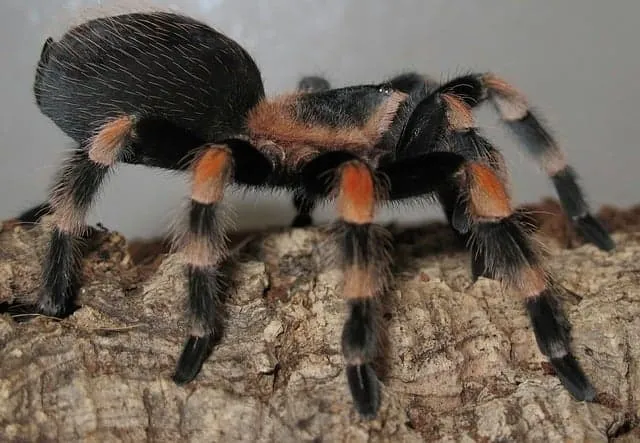
Appearance and Characteristics
The Chilean Rose Hair tarantula (Grammostola rosea) is one of the most popular beginner tarantulas due to its hardiness and calm temperament. They have a relatively simple appearance, featuring a mix of brown and pink hues. They are terrestrial, meaning they spend their time on the ground, and grow to a moderate size, typically around 5-6 inches. Their gentle nature and attractive coloration make them a favorite among both novice and experienced keepers. They are native to the deserts of Chile, where they have adapted to harsh conditions.
Temperament and Handling
Chilean Rose Hair tarantulas are known for their docile temperament and are often considered one of the gentlest tarantula species. They are not prone to biting or defensive behavior, making them an excellent choice for beginners. However, like all tarantulas, handling should be done with care and respect. They are generally slow-moving and less likely to run or bolt. They may kick hairs off their abdomen as a defense mechanism, which can cause skin irritation. With a patient approach and gentle handling, the Chilean Rose Hair is a rewarding pet and a fantastic introduction to tarantula ownership.
4. Mexican Red Knee Tarantula
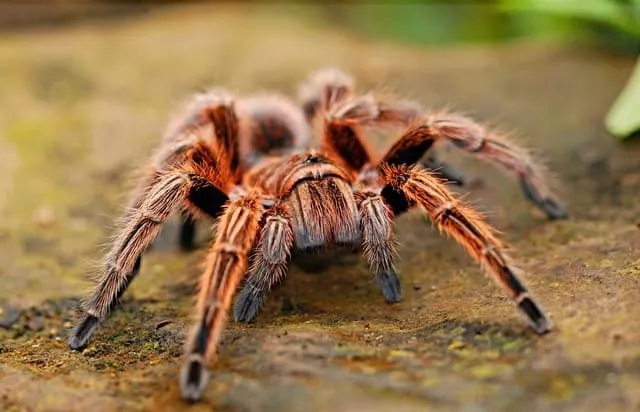
Appearance and Characteristics
The Mexican Red Knee tarantula (Brachypelma hamorii) is a stunning and popular choice for beginner tarantula owners. They are known for their striking coloration, with black bodies and vibrant red-orange markings on their leg joints. This species is terrestrial and grows to a considerable size, with females often reaching up to 6 inches or more in leg span. Their attractive appearance makes them a favorite among enthusiasts, and their relatively calm demeanor adds to their appeal. They are native to the Pacific coast of Mexico, where they inhabit burrows in scrubland and tropical deciduous forests.
Temperament and Handling
Mexican Red Knee tarantulas are generally docile and are known for their calm temperament. They are not typically aggressive, but handling should always be done with caution and respect. They can be prone to kicking off urticating hairs as a defense mechanism, which can cause skin irritation. They are relatively slow-moving and less likely to bolt or run. Although they are not known to bite unless provoked, it’s essential to avoid sudden movements and to handle them carefully. With their stunning appearance and manageable temperament, the Mexican Red Knee tarantula is a great choice for beginners.
5. Cobalt Blue Tarantula
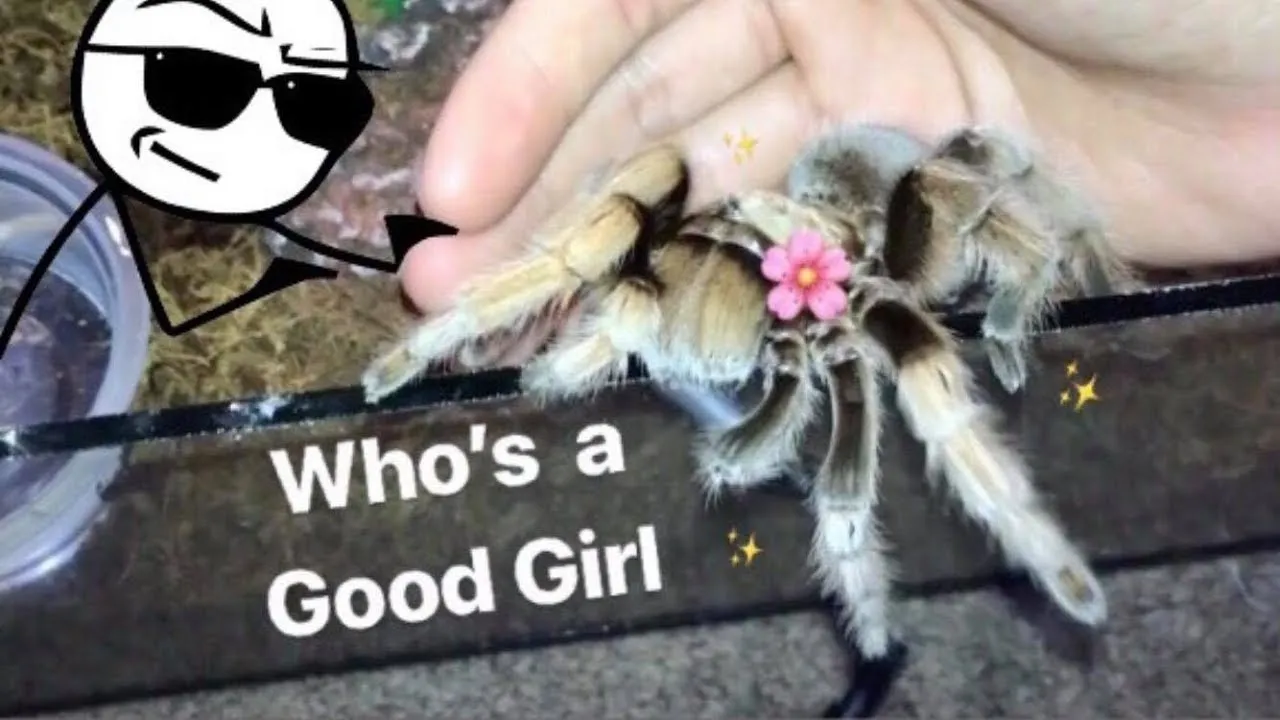
Appearance and Characteristics
Cobalt Blue tarantulas (Cyaneopubescens) are one of the most beautiful spiders. It has a stunning metallic blue color. These tarantulas are known for their vibrant metallic blue coloration, which covers their legs, carapace, and abdomen, making them a visually stunning pet. They are a terrestrial species and grow to a moderate size, typically around 5-6 inches. Cobalt Blues are native to the tropical forests of Myanmar and Thailand. Their appearance makes them very appealing, but it is important to note that this species can be a bit more challenging to care for than some other beginner species.
Temperament and Handling
Cobalt Blue tarantulas are known to be more defensive than some of the other beginner species listed. They are fast and can be prone to biting if provoked. Therefore, handling them is generally not recommended, especially for beginners. Their speed and potentially defensive nature require caution, and it is crucial to provide them with a secure and well-maintained enclosure. While they may not be the best choice for handling, their striking appearance makes them a rewarding pet for those willing to observe and admire them from a distance. Adequate research and a proper environment are critical before owning this species.
Essential Beginner Tarantula Care Guide
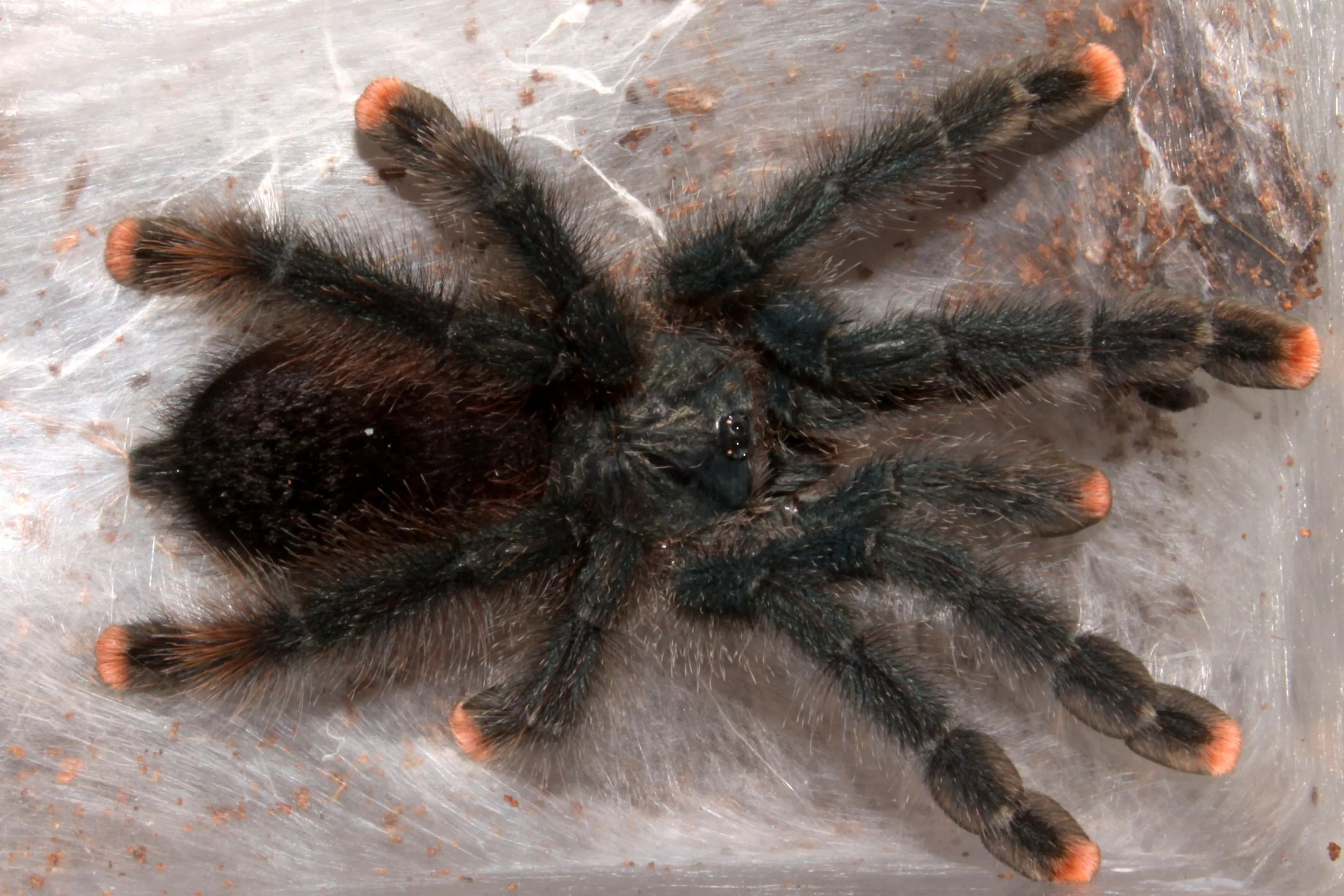
Proper care is crucial to ensuring your tarantula’s health and happiness. Here are some essential guidelines for creating a comfortable and safe environment for your new pet.
Choosing the Right Enclosure
Selecting the right enclosure is the first step in tarantula care. The size of the enclosure will depend on the species and the size of the tarantula, but it should always be appropriately sized to provide enough space for movement and a comfortable habitat. Terrestrial species require more floor space, while arboreal species need height for climbing. Ensure the enclosure is escape-proof, with a secure lid and adequate ventilation. Clear plastic or glass enclosures are ideal, allowing for easy viewing and monitoring of your tarantula. Consider the species’ specific needs and choose an enclosure that suits them best. Proper ventilation is important to prevent mold.
Substrate and Habitat Setup
The substrate is the bedding material that lines the bottom of the enclosure, and it’s essential for both the tarantula’s comfort and health. The choice of substrate depends on the species’ natural habitat and humidity requirements. For many beginner species, a mixture of peat moss, vermiculite, and coconut fiber works well. This combination retains humidity while providing a good surface for the tarantula to burrow or roam. Add decorations such as cork bark, artificial plants, or hides to create a stimulating environment and provide security. Make sure the substrate is deep enough for the tarantula to burrow if it is a burrowing species and replace it as needed to maintain hygiene and prevent the growth of mold or mites. A well-designed habitat replicates the spider’s natural environment, which is crucial for their well-being.
Temperature and Humidity Requirements
Tarantulas require specific temperature and humidity levels to thrive. Most species prefer temperatures between 75-85°F (24-29°C), which can often be maintained in a normal household environment. However, it’s important to monitor the temperature and provide supplemental heat if needed, especially in cooler climates. Humidity levels vary depending on the species, with some requiring more humidity than others. You can measure humidity using a hygrometer and maintain it by misting the enclosure with water, providing a water dish, or adjusting ventilation. High humidity is usually maintained through misting the enclosure. Regular monitoring of temperature and humidity is essential for ensuring your tarantula’s health and well-being, as extreme conditions can be harmful.
Feeding Your Tarantula
Feeding your tarantula is relatively straightforward. They typically eat live insects, such as crickets, mealworms, and roaches. The frequency of feeding depends on the size and age of the tarantula, but generally, juveniles should be fed more often than adults. Feed juvenile tarantulas two to three times a week. Adults can be fed once or twice a week. Always ensure the food insects are smaller than the tarantula’s body size to avoid stressing the spider. Remove any uneaten insects within 24 hours to prevent them from bothering the tarantula. Providing a fresh water source in a shallow dish is also important to keep them hydrated. You will need to maintain a regular feeding schedule and provide a variety of food sources.
Watering and Hydration
Hydration is essential for tarantula health, and access to clean water is a must. Provide a shallow water dish in the enclosure that is easily accessible. You can use a bottle cap or a small, stable dish. Ensure the dish is shallow enough to prevent drowning, especially for smaller tarantulas. Regularly refresh the water to keep it clean and free from debris. In addition to the water dish, you can also mist the enclosure to increase humidity levels, especially during molting. The frequency of misting will depend on the species and its humidity requirements. Always monitor the substrate and ensure it does not become overly wet, as excessive humidity can lead to mold growth. Proper hydration is crucial for molting and overall health.
Safety Precautions for New Tarantula Owners
While tarantulas are generally docile, it’s important to take certain safety precautions to ensure both your safety and the well-being of your pet.
Handling with Care
Handling tarantulas should be approached with care, especially for beginners. Some species are best observed without handling, such as the Cobalt Blue, because they can be very fast and defensive. Before handling, ensure the tarantula is calm and that you are in a quiet environment. Always handle the tarantula over a soft surface, such as a bed or the floor, to minimize the risk of injury if it falls. Use gentle movements and avoid sudden changes. If the tarantula shows signs of stress, such as raising its front legs or flicking urticating hairs, do not force the interaction. The goal is to create a positive experience and to prioritize the tarantula’s well-being.
Recognizing and Avoiding Bites
Recognizing the signs of a stressed or defensive tarantula is vital to avoiding bites. Tarantulas give signals that they are unhappy. Be aware of the potential signs of aggression, such as raising their front legs, exposing their fangs, or exhibiting a threat pose. Avoid poking or bothering the tarantula, and never put your hands in the enclosure without knowing where the spider is. It is essential to understand that tarantulas do not bite without a reason, so always show respect. Never handle them if you are unsure about their temperament. Take any bite seriously.
What to do in Case of a Bite
While tarantula bites are rarely life-threatening, they can be painful and may cause localized symptoms such as redness, swelling, and itching. If you are bitten by a tarantula, wash the bite area thoroughly with soap and water. Apply a cold compress to reduce swelling and pain. Monitor the bite for any signs of infection, such as increased redness, warmth, or pus. If you experience severe symptoms, such as difficulty breathing or allergic reactions, seek immediate medical attention. Always check with your doctor. Knowing how to react is vital for your safety.
Conclusion The Perfect Beginner Tarantula
Choosing a tarantula as a pet can be a rewarding experience for beginners, providing an intriguing look into the world of invertebrates, with many different options. Remember that choosing the right species, such as the Pinktoe, Curly Hair, Chilean Rose Hair, Mexican Red Knee, or Cobalt Blue tarantulas, is crucial for a positive experience. With proper care, a safe environment, and an understanding of their needs, you can enjoy the fascinating world of tarantulas. Always prioritize the well-being of your pet and be prepared to learn and grow with your new, eight-legged friend. Enjoy the unique journey of tarantula ownership and the beauty they bring to your life.
